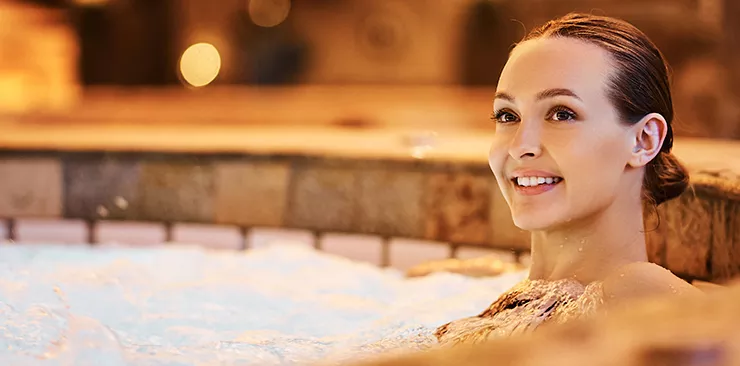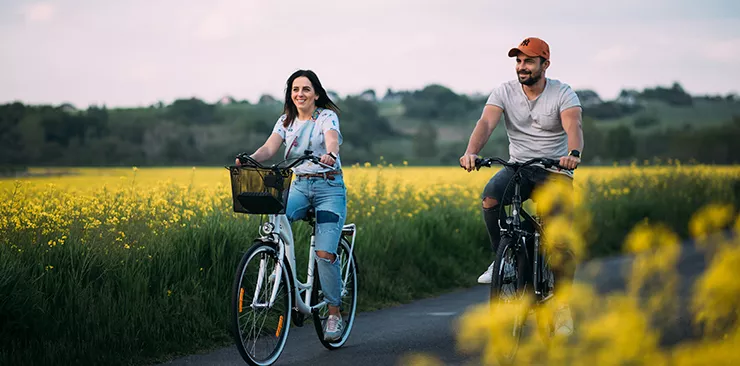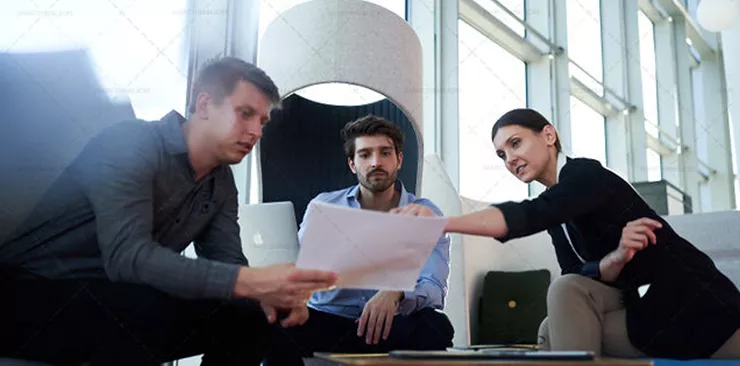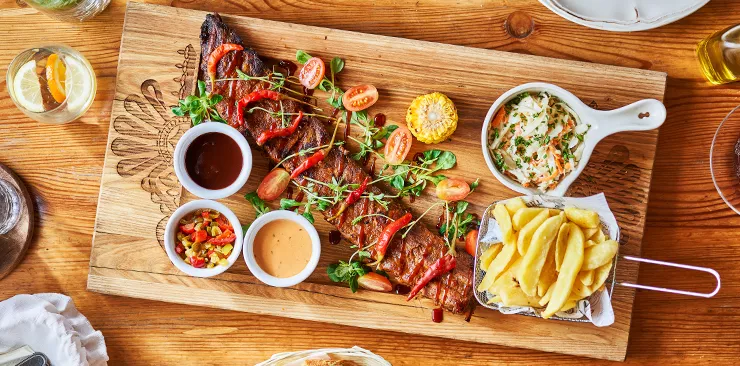




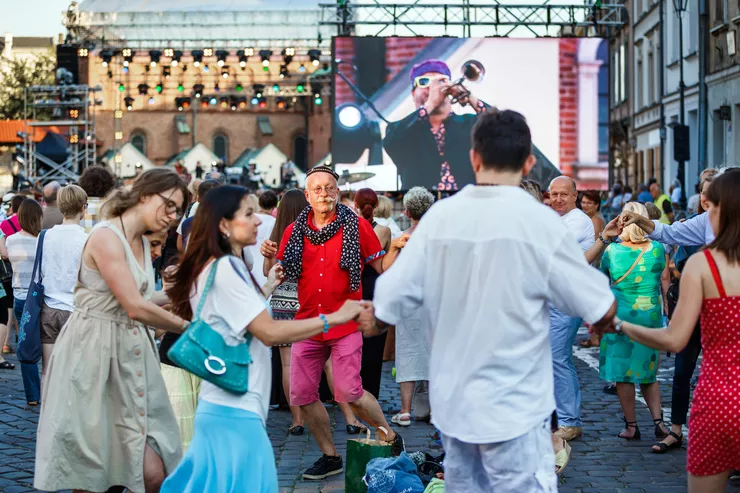
Jewish Culture Festival and beyond.
Małopolska, like a lens, brings together the centuries of Jewish life in Poland. Never failing to honour the victims of the Holocaust, it cherishes the memory of the centuries when the two cultures – Christian and Jewish – coexisted, strongly emphasising the significance of the Jewish culture born in the region and radiating from it.
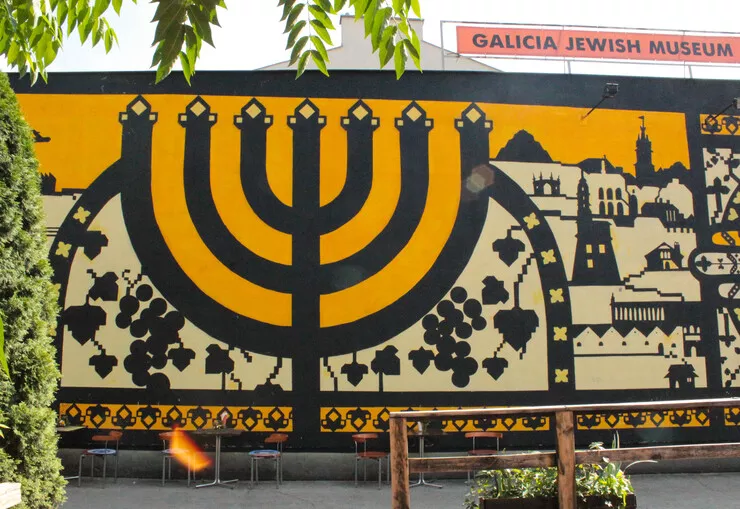
The Jewish Culture Festival that celebrates the Jewish life started over 30 years ago when two friends realised Jewish life was missing and wanted to have it back, even if only for a few days. Their idea gave birth to the largest festival of this type on the continent, and began to attract thousands of artists, academics, and just enthusiasts: from the cantors (hazzans) of the Great Synagogue to instructors of Jewish paper cut, from prime klezmers, via Sephardic flamenco dancers, to historians and anthropologists. As the Festival focuses on life and offers a direct experience of Jewish culture, it has certainly breathed a new life into the district of Kazimierz and elicited many a smile where the horrors of the Second World War still lingered.
The Holocaust is remembered in the Schindler’s Museum operating in the buildings of the former Oskar Schindler’s Enamel Factory. Even though situated in the distant district of Zabłocie, it attracts hundreds of visitors from near and far each day. Groups of Jewish seniors mingle here with Polish schoolchildren and arrivals from all around the world.
Eager to make your own picture of the Jewish life in bygone Małopolska, you are likely to find many pieces of it in the Galicia Jewish Museum in Kazimierz. The concept came solely from Chris Schwarz, a very successful British press photographer, who became so sold enamoured in the history of the Jews of Małopolska/Galicia and in Kazimierz that he sold his house in Brighton to buy a dilapidating building here, renovate it, and turn it into a place of remembrance of them.
It is a good place to start exploring the Jewish heritage of Kazimierz, as it stands just across the street (and a small square) from the oldest of the seven synagogues of Kraków – the beautiful Renaissance Old Synagogue with a highly instructive and emotional exhibition on the history of Kraków Jews. There are two more synagogues in Szeroka, the street where thousands of people dance for the closing concert of the Festival. They are the Remah (Remuh) with graves of prominent rabbis in the cemetery surrounding it, and the Wolf Popper Synagogue. Wysoka– the High Synagogue stands in Józefa, just next to the headquarters of the Jewish Culture Festival, Izaaka – round the corner from Wysoka, whose front is in Kupa street that ends in the rear wall of the Kupa Synagogue fronting ul. Miodowa, which also boasts the progressive synagogue – The Temple (Tempel), where a stunning prayerful concert by the Cantors opens each year’s Festival.
Although it suffered profound losses, the Jewish culture survived the Holocaust and you can see it returning in many places where Jews lived in the region. The renovated bimah of the Old Synagogue in Tarnów is a backdrop for many cultural events. Oświęcim’s Chevra Lomdei Mishnayot Synagogue, now part of the Auschwitz Jewish Centre, miraculously survived the Second World War, a disaster that unfortunately left the city’s Great Synagogue and the Synagogue of the Bobowa Hasids. By the way, Bobowa is a village at the other, eastern, end of the region, and it also boasts a magnificent (rebuilt) synagogue. To find out more, you can click here.
If you find the right guide, you can also learn were the Kraków’s two forgotten synagogues are. And who knows, perhaps they’ll even manage to give you a sneak peak of their façades. If not, you can see their photos at the Galicia Jewish Centre.
Kraków’s Jewish Community Centre (JCC) has strong ties to Britain. It is common knowledge that it was officially opened by the Prince of Wales and the Duchess of Cornwall in 2008, yet hardly anyone knows that it was the President of the Jewish Community in Kraków, Mr Jakubowicz, who prompted His Royal Highness to build it during an informal meeting over ice cream at Alef Café in Szeroka six years earlier.
The large open expanse of the former KL Plaszow, the camp described vividly in Spielberg’s Schindler’s List, is undergoing.
Cheder, the café by the headquarters of the Jewish Culture Festival, offers much more than just coffee served the Oriental way and wines from Israel, as it doubles for a reading room.

